'Giving life to old and new manual lenses'.
With notes on lens adapters and macro close up lenses.
By Ian Walker UK.
Introduction.
There is no doubt the convenience on
many occasions, both in the macro world and landscape, of modern auto
focus lenses which are often fitted as cheap kit lenses and more
expensively as stand alone options from manufacturers to many a
modern digital camera. However lurking in a dark corner, perhaps
unloved for years from film days there may be new life for
older manual focus lenses from a bygone era. Besides bringing them back
to life their build quality and finish outshine by a good
margin many a plastic lens not only of the 'kit 'variety but expensive
macro and zoom lenses now provided by the big manufacturers
and with a little patience can give rewarding results not only in the
pleasure of handling and using them but in their optical performance
too.
With the arrival of the Panasonic G, GF and Sony NEX series of
inter-changeable lens cameras, which have very short
sensor to lens flange distances, it
wasn't long before a whole raft of adapters were being manufactured by
the Chinese available for the micro 4/3, 4/3 and Sony mounts. So
as
well as modern plastic auto focus lenses for these bodies it also
became possible to fit older lenses from the likes of Leitz,
Leica, Zeiss [Contax] and Nikon as well as being able to fit new manual
lenses from Leica, Zeiss, Voigtlander etc. This has resurrected the
use of much
older lenses with pleasing results. From over 30 years ago my brother
Dave has kept his old Nikon AI lenses then of course being used with
likes of the Nikon Nikkormat 35mm film body and for a small outlay
experiment with these fitted to the likes of Sony and Panasonic camera
bodies.

Typical adapters for the Sony NEX and Panasonic micro 4/3.
Leica M to Sony NEX, Leica M to micro 4/3 & Nikon to
micro 4/3 lens adapters.
In general the quality of these
adapters are admirable for their price, a
typical adapter bought direct from Hong Kong on eBay will vary
between £10 to £20 including shipping. However it is worth
shopping around from the dealers for the best built as
several designs of the same type can be available, also considering
your budget
for how much you wish to spend. You will also find the same adapters
being sold in the UK with high mark-ups of typically 2 to 3x the Hong
Kong
price were the eBay seller will be buying in bulk and making a healthy
profit relying on the fact that some people prefer to buy from
a UK based seller. My brother Dave and I buy ours direct from
Hong Kong, the low prices don't attract customs duties and usually
arrive in small 'Jiffy' bags in around a week or less. There
is a small advantage buying from a UK seller however in that it is more
convenient to send back the adapter if you are not happy with the
build.
Feedback from us sent to Hong Kong suppliers has been positive when we
have had an issue with the design in some way in that they seem very
interested on user satisfaction.
In the above picture on the left the
first adapter is the Leica M mount
to Sony NEX this is well made and both the lens body to adapter and
adapter to camera body are a smooth and snug fit when fitting. The only
part I don't like is the small 'pin' that requires depressing to remove
the lens it is rather fiddly.
In the centre The Leica M to micro
4/3 adapter, this has a larger more
convenient tab to release the lens but a slight wobble of the lens when
fitted spoils the overall impression of a well made unit, this
information was passed back to the suppliers in Hong Kong.
On the right is the Nikon AI to micro 4/3 adapter. This is a very well made unit, both fit and finish are superb and provide a rugged interface for the Nikon E series I have used with the Panasonic GF2. The aesthetics are most pleasing and make a beautiful combination with the lenses fitted to the camera.
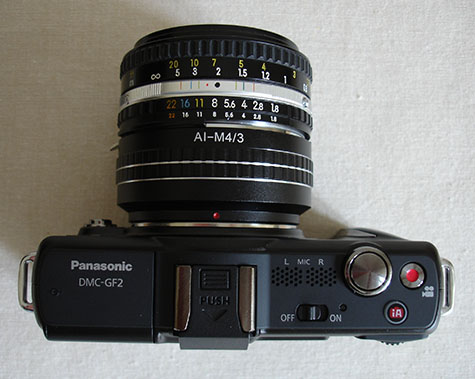
Panasonic GF2 fitted with Nikon AI to micro 4/3 adapter with Nikon E
Series
50mm f1.8 lens, a lovely package and well balanced in the hand.
The 52mm filter thread used
throughout most of the old Nikon AI lenses means everything is kept
simple for polarizers, close up lenses etc, compare this to new
lenses with wide variations in filter thread between different lenses
from the same maker.
Anybody who has used modern
plastic auto focus lenses and adjusted the zoom [which often
projects further than you think], grinds as you turn the
friction plastic on plastic moldings.. well what a refreshing change
to use one of the old lenses like these, ultra smooth focus, f stops
that click with precision makes you feel are back once more in the
world of a bygone age when things were done right. The E series lenses
by Nikon were a cheaper and simpler alternative to their full
price versions but this provided a lighter more compact body ideally
suited to modern small camera bodies like the Panasonic GF2.

Comparison in lens sizes.
Panasonic 14-42mm f3.5-5.6 kit lens [52mm filter thread], Nikon E
series 100mm f2.8, Nikon E series 50mm f1.8, notice the Nikons' wider
aperture.
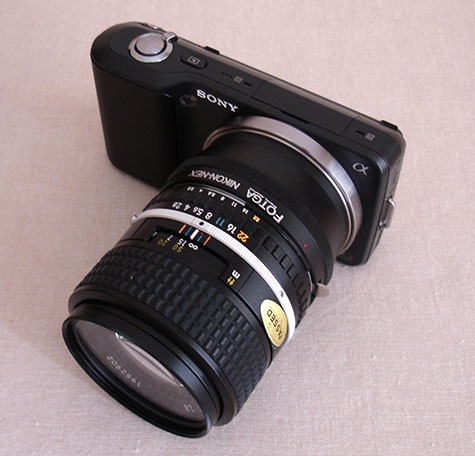
Sony NEX-3 fitted with Nikon adapter [not shown previously] and 100mm
f2.8 series E lens, by holding both the lens body and Sony rubber hand
grip a firm hold is possible.
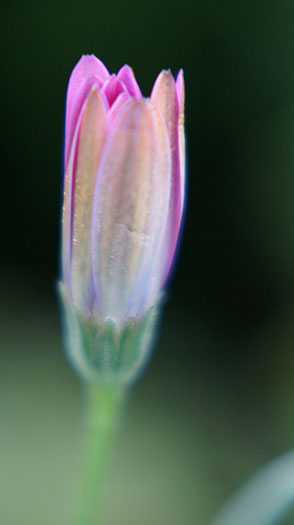
Sony NEX-3 Nikon E series 100mm f2.8 lens, Kood +4 uncoated close up
lens.
Above and below, the older design of
the Kood close up lenses with no coatings to the glass reduces contrast
and adds softness to the image but with the right subject can add an
ethereal feel to the picture.
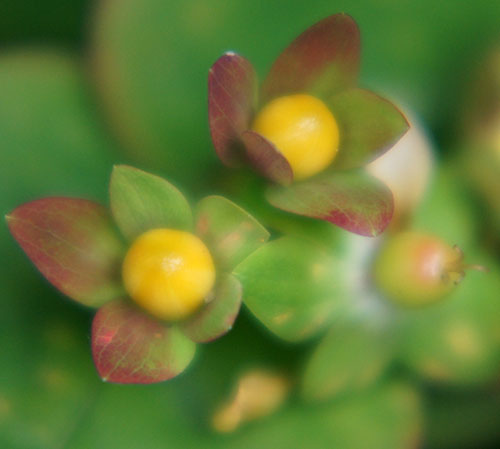
Details as previous image.
On buying second hand manual focus
lenses.
Remember the
focal lengths of these lenses will be a lot different to their marked
values so ton he Sony NEX for instance a Nikon 50mm standard lens will
become 100mm so this will be have to be taken into account when
shopping around and how much patience you have in the field if you wish
to use without a tripod as subjects with close up lenses attached can
appear to move rather alarmingly on the LCD monitor. However in my own
case since one of my main interests is shallow depth of field close up
work
with the 'dreamy' backgrounds these fast lenses provide at full
aperture
together with an effective longer focal length are ideal for best
effect.
Contax G.
With the Chinese providing the
methods for fitting older lenses the markets have changed somewhat
regarding pricing of lenses. Take for example the Contax G series made
by Zeiss that
were used with their compact G1 and G2 35mm automatic film camera.
These lenses are
quite modest looking affairs more often than not finished in an
anodized silver with occasional black versions being found. Some years
ago before the rise of the adapter market these lenses could be found
cheaply both in the back pages of dealers in magazines such as Amateur
Photographer in the UK and of course eBay sellers but now their
renowned excellent optical quality and being able to fit to cameras
like these have made them scarcer to find and pushed prices
higher.
The adapter needed to fit these G series lenses have a special focus
ring, this activates a revolving toothed pin that fits into the flange
of
the lens as the lenses themselves have no focus ring. At one point I
was considering buying a Contax 45mm f2 lens so had purchased the
adapter
but the rising prices of the lenses and often the lack of original lens
caps, documentation and boxes put me off. The adapter I received
was rather crude from China, the focus ring was grinding and lumpy but
fortunately after dismantling, cleaning of the sticky and
patchily applied grease from the manufacturer and using Nye
grease the action was much improved but sold the adapter on without
buying the lens.
Leica M.
Leica lenses are not usually found
cheaply! However the older Leitz lenses from the 1960's can sometimes
be
found at 'acceptable' prices if you are in the market for the brand. I
have not owned any Leica or Leitz lenses but the style and finish
certainly seem
to vary quite a lot especially on the much older lenses, many reviews
are available on the Internet and some with regard to compatibility
with modern digital camera bodies like the Panasonic and Sony.
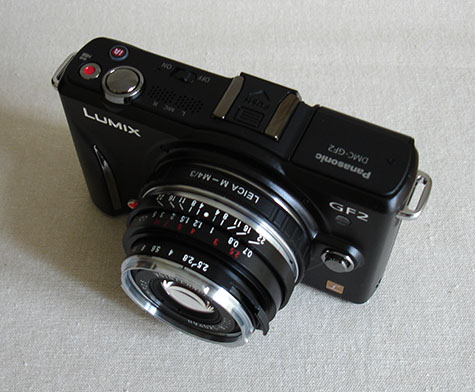
Voigtlander 35mm f2.5 Color-Skopar with Leica M mount fitted to the GF2.
I bought this Voigtlander lens because of its build and compactness together with excellent technical reviews, very little in the way of distortion can be seen when photographing objects with straight edges in terms of barrel or pin cushion, I can't say the same for a number of kit lenses at the same focal length over the years. It works with Swiss watch precision and the 10 blade diaphragm provides an excellent bokeh (i.e. the 'look' of out of focus backgrounds). Japanese built it has the same feel and presentation as modern Zeiss Contax lenses. It uses a 35mm filter thread so a large step up ring is needed to use my B+W 52mm macro lenses but these are very cheap and for me cost effective rather than buying 35mm close up lenses, it does add weight however.
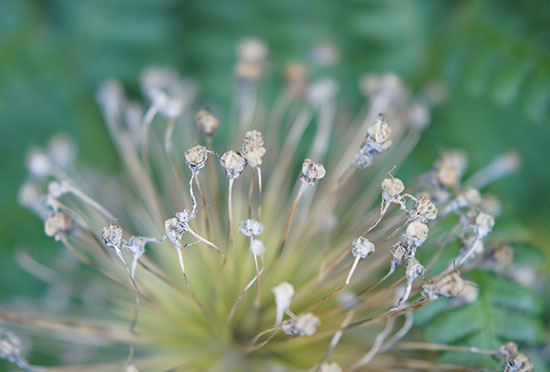
Tiny seed heads, Sony NEX-3, Voigtlander 35mm f2.5 lens set @ f2.5
& B+W 4T+2T close up lenses, hand held.
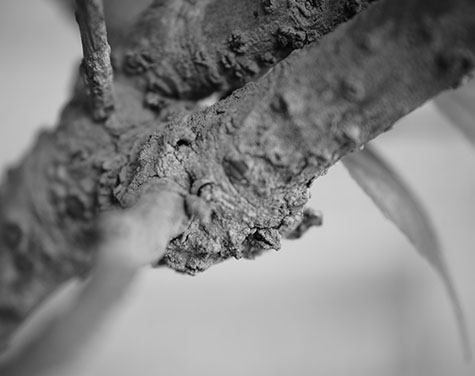
Detail of apple tree bark, camera & lens details as above, hand
held.
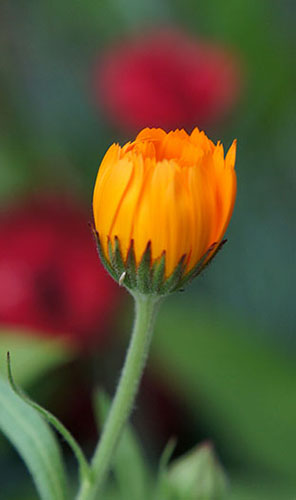
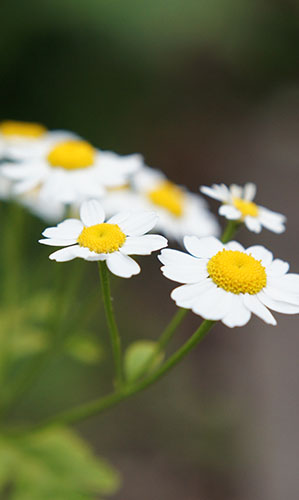
Sony NEX-3, Nikon E series 50mm f1.8, Kood +4 close up lens.
Nikon AI.
Both the Nikon E series and the more
expensive AI equivalents can be found at more modest prices second
hand, a huge range is available many of which stick to the 52 mm filter
thread. A lot of the primes and semi wide angle are fast lenses, f1.4,
f1.8, f2.8 are typical, this extra aperture can be useful in some
circumstances in terms of technique or keeping the shutter speed up in
dim light. The ones I have come across are all well made and finished
and in those days each lens came with the Nikon quality check sticker,
something you don't see these days!
Close up lenses.
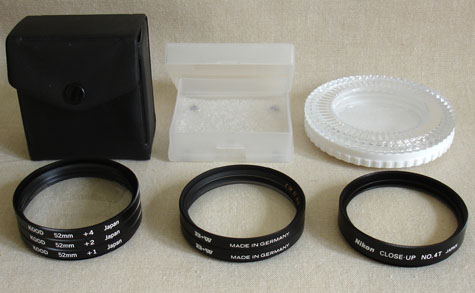
Kood, B+W & Nikon achromatic doublet 4T close up
lenses,
all 52mm thread.
The above picture shows a collection
of close up lenses which may be attached either direct to lenses like
the Nikon in this article or via step up adapter ring which was
required for the Voigtander lens which are available for a few pounds
on eBay. The Kood uncoated collection was bought as a set many years
ago, my favourite are the B+W which are solid brass construction and
coated glass. The Nikon achromatic doublet has better colour correction
which is great for removing any signs of colour disturbance specially
around tips and edges of flowers and plant leaves in high contrast
situations like shooting towards the sun. The downside is the doublet
is heavy and can unbalance an otherwise 'good feel' with lens and
camera.
When fitting two close up lenses together the stronger of the two
denoted by the higher number is fitted first. Stacking up to a point is
acceptable but with uncoated lenses like the Kood more reflections are
introduced. The combination of what otherwise are lenses which can only
focus down to 0.7 metres like many of the old standard 50mm lenses with
close up lenses fitted transforms them into macro lenses. Going one
step further the same Nikon lenses for instance can be reversed with
the correct adapter but without the close up lens attached transforms
them into 'super macro' but working distances are now much smaller and
a tripod with fine focus block or copy stand is required ideally. So
the versatility of these older lenses is impressive if you like taking
macro shots!
The above macro routes are very cost effective if older lenses to add macro adaptors are owned. The dedicated modern macro lenses for the Panasonic and Sony cameras, especially the former are high, although the benefit of autofocus and metering at full aperture is of course gained.
Technique.
Everybody has their own likes and
dislikes when it comes to technique, as far as my own preferences are
concerned for macro using older manual focus lenses I decide how much
area I wish to cover and select an appropriate lens and close up lens
combo, then either set the lens focus ring to infinity or to the
closest focus distance, this will vary by a considerable degree the
captured area, I don't try and focus the subject using the focus ring
on the lens but use my arms and body to adjust my position for the
point of focus. This is due to the fact I do not like using tripods, if
you wish to use one then a different technique can be used. If a tripod
is used you can use the 'manual focus assist' which is both on the Sony
and Panasonic cameras by a push of a button which magnifies the subject
several times [7 or 14x on the Sony] which aids focus greatly, trying
to use this feature hand holding the camera and you will make yourself
dizzy unless you can hold the camera as steady as possible!
With wide apertures used for my macro's shutter speeds are around
1/500th to 1/2000th of a second on a sunny day with ISO selected in the
region of 200, as I move from sun to shade large variations of light
available can occur and the ISO increased accordingly, with modern
cameras like the Sony 800-1600 ASA can be used and I like the fine
grain effect it provides at the higher end. As the focal length is
increased considerably with the use of these lenses on both the
Panasonic and Sony a careful choice is essential if it is not to become
unwieldy if hand held shots are to be taken as subjects are going to
move wildly about on the monitor, a tripod is desirable for these. The
Voigtlander works well as it is small and light and becomes a 70mm lens
and the 50mm Nikon standard lens is also suitable. Macro lenses of old
for film cameras had focal lengths typically in the region of 90-100mm.
Although the Panasonic 4/3 system
uses a smaller sensor size than the Sony APS [also used in many DSLR's]
noise or 'artifacts' have not been a problem in the delicate
shading, deep colours and highlights of the pictures I have taken, at
least in the final sizes I prefer.
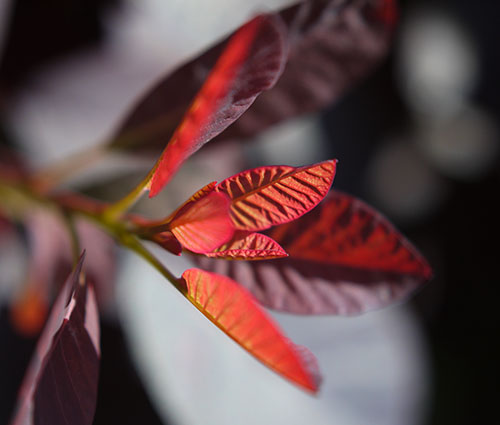
Garden plant, hand held.
Panasonic GF2, Voigtlander 35mm f2.5, B+W 4T+2T close up lenses.
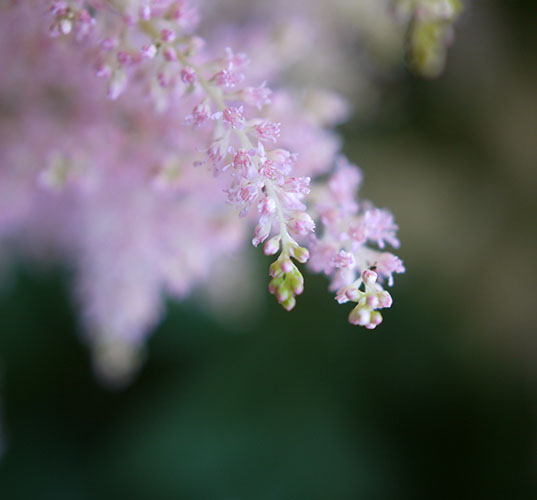
Tiny flowers, the dark background selected differentiates the subject
well, hand held.
Panasonic GF2, Voigtlander 35mm f2.5, B+W 4T+2T close up lenses.

Bud, the wide open lens together with close up lenses gives a pleasing
bokeh, hand held.
Panasonic GF2, Voigtlander 35mm f2.5, B+W 4T+2T close up lenses.
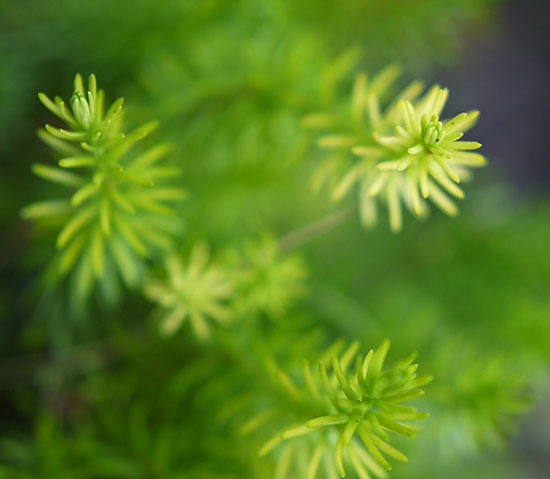
Panasonic GF2, Voigtlander 35mm f2.5, B+W 4T+2T close up lenses, hand
held.
Conclusion.
Nobody can deny the convenience of
auto focus lenses and of course the light weight kit lens attached to
the Panasonic GF2 has a 52mm filter thread so the same close up lenses
may be attached with the versatlity of zoom thrown in. However
sometimes the extra difficulty but use of finely engineered products
like the Nikon E series lenses which would otherwise perhaps have sat
in a
drawer can take on a new life.. for little extra expense we can once
more
enjoy the days when all photography was based around the user
considering in deeper thought about shutter speeds, f stops, ISO, etc
and the way these effect the final photographic result, no bad thing in
the modern world of autonomy.
Both the Sony NEX-3 and Panasonic GF2 are excellent cameras, the
Panasonic has great build and finish but the Sony is not far behind
albeit of plastic construction. The high resolution articulating screen
has the edge over Panasonic's fixed lower resolution screen which I
found to be a bit duller outside but both provide excellent images and
the menu structure on both is not too complex, I have seen complaints
on the web about the Sony interface being slower to access some
settings but I personally think it's a breath of fresh air and highly
intuitive compared to a number of cameras I have had opportunity to use
in the past.
Thanks
to my brother Dave for the loan of the Panasonic GF2, Nikon lenses and
close up lenses for this article.
To see a master craftsmen at work
regarding flower macro, visit any of Brian Johnston articles on
Micscape
either from the archive Flower Garden of Macroscopic Delights or new articles introduced every month.
All comments to the author
Ian Walker
are
welcomed.
Microscopy UK Front
Page
Micscape
Magazine
Article
Library
© Microscopy UK or their contributors.
Published in the July 2011 edition of Micscape Magazine.
Please report any Web problems or offer general comments to the Micscape Editor .
Micscape is the on-line monthly magazine of the Microscopy UK website at Microscopy-UK .
© Onview.net Ltd, Microscopy-UK, and all contributors 1995 onwards. All rights reserved. Main site is at www.microscopy-uk.org.uk .